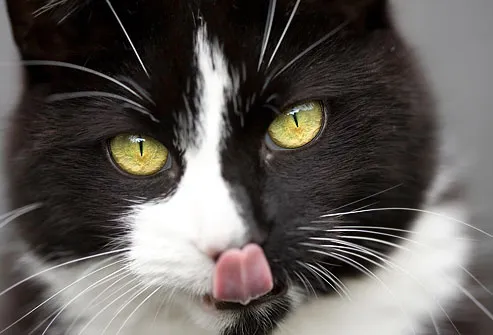
How to Feed Your Adult Cat
A while back you brought home an adorable, fluffy kitten that required special food and special treatment to make sure they grew up happy and healthy. Now, you have an adult cat with special nutritional needs for maintenance. Make sure you’re fulfilling your adult cat’s nutritional needs to keep them feeling and looking their best now and for years to come.
Check out these adult cat nutrition facts to learn the best way to nourish your feline friend.
What Should I Feed My Adult Cat?
So your cat is growing out of kittenhood: Their fur is getting sleeker, their balance is getting better and their body is getting bigger. You’re starting to think that it’s time to switch them from kitten food to adult food, but you’re not sure where to start. Talk with your veterinarian about when is the right time to change cat food formulas. Typically, your cat’s doctor will recommend switching your young cat to adult food after they’ve been neutered or once they’re a year old, whichever comes first.
There are an overwhelming number of cat food formulas available, but not all adult cat foods are created equal. When looking at your options, choose a formula that is designed specifically for adult cats. This is because adult cat food formulas contain the proper amount of nutrients and calories your feline friend needs for maintenance. Kitten food, on the other hand, is specifically formulated for growth and play, and is too calorie dense for indoor adult cats.
Look for Protein
Pay close attention to the amount of protein in your cat’s food. Cats are carnivores by nature, and they are capable of subsisting on meat alone. The best cat foods will contain more protein and fewer grains. Often, wet cat foods have a higher concentration of proteins in the formula.
It’s also important to ensure that your cat is getting the correct types of protein. For example, taurine – which is critical for normal vision, normal digestion, normal muscle function, healthy immune system and more – is exclusively found in animal-based proteins, such as chicken and fish.
Consider Dental Health
Dry cat food has a place in your cat’s diet as well. It can help keep your cat’s teeth healthy, as crunchy kitty kibble helps naturally clean their pearly whites as they chew. Cats that eat exclusively raw or wet diets can suffer from dental problems. A balance between the two is the best, either mixed or alternated.
Nourish Their Skin and Coat
Just like humans, what our cats eat affects their skin and coat health. If your cat is battling dry skin or has patchy fur, it could mean they are not getting the right types of fatty acids. Omega-6 and omega-3 fatty acids are essential for maintaining healthy skin and a soft, shiny coat in cats.
Certain cat food ingredients contain higher levels of these omega fatty acids, including salmon and other types of fish. These types of good fats can also be found in both animal-based and plant-based ingredients, although it is recommended to feed your cat as close to 100% animal protein as possible.
Note: A cat’s coat is made up almost entirely of protein. If your cat’s diet doesn’t contain an adequate amount of quality protein, the hair can become weak, dry and brittle and even begin to fall out.
How Much Should I Feed My Cat?
The amount of food that your cat needs depends on their age, size and level of activity. On average, most adult cats require about 2/3 cup of food each day, including wet food and dry food if you mix the two. If you feed your cat twice a day, break the amount into two equal portions.
Some pet owners choose to open-feed their cats, meaning they put out a portion of food and allow their cat to eat whenever they’re hungry. If this is the case, keep in mind the freshness of the food. It is recommended that you not leave out more than three days of food in advance. Keep in mind that you can only open-feed with dry food, as wet food will spoil quickly and should only be left out for around 20 minutes.
Cats are creatures of habit. Establish a feeding routine that fits both of your schedules to ensure optimal happiness and health for your feline friend.
Tip: When cats are sick, often their appetites diminish. It will be easier to observe your cat’s eating habits if you feed them at intervals instead of open-feeding.
Don’t Forget to Hydrate
Cats have a tendency to avoid drinking as much water as they should, as thirst is significantly diminished in cats, meaning they don’t feel thirsty like humans do. To make sure your adult cat is getting enough water, place multiple water bowls around the house. This gives your cat options, and allows them to choose their preferred watering hole. You can also try using a fountain, since some cats might prefer drinking from a moving water source. To find out if your cat prefers to drink moving water, monitor their behavior when you turn on the faucet.
Tip: If your cat’s drinking water has particles and debris, or if the dish has an odor, it might dissuade your cat from drinking. Keep their water dish clean and full at all times to keep them interested.






